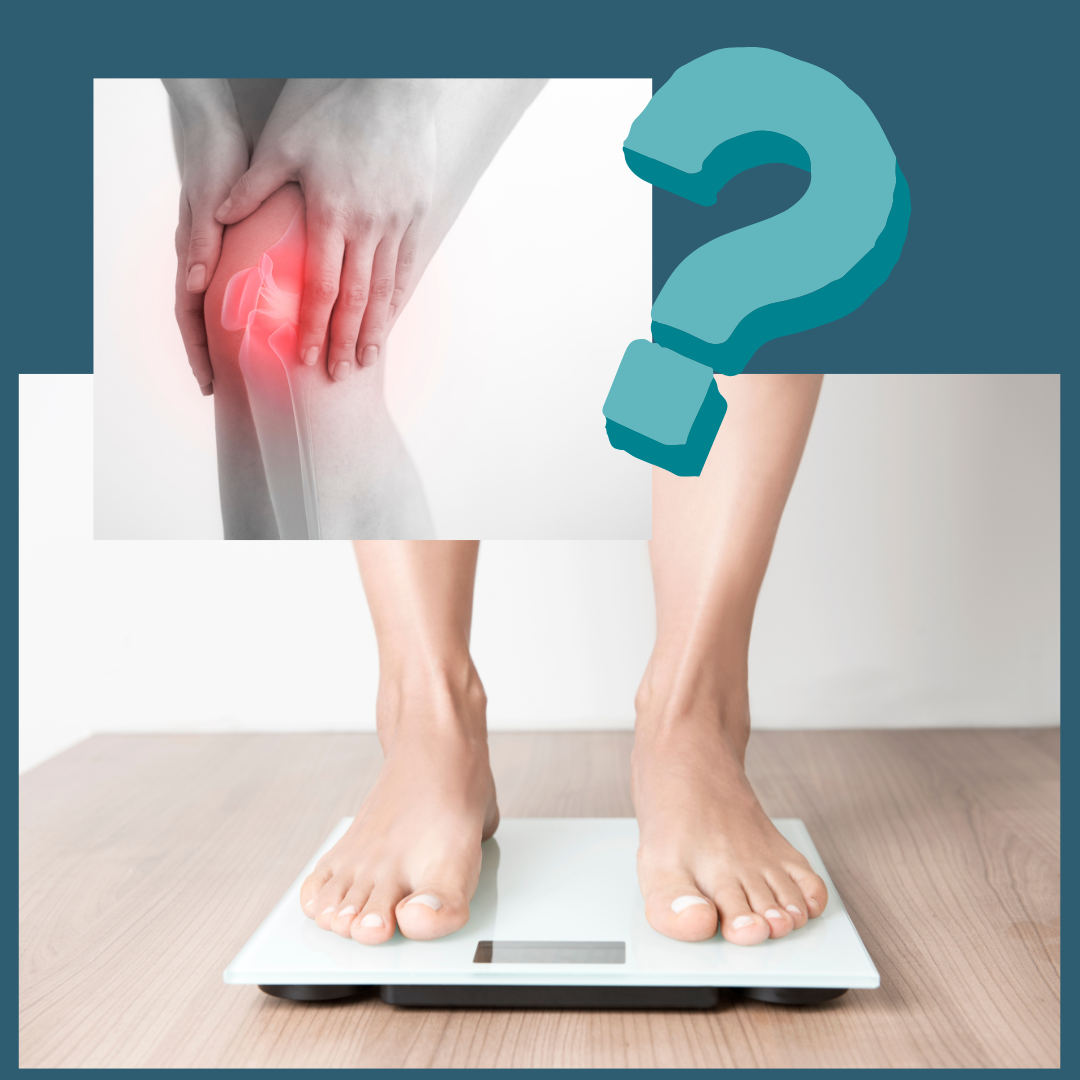Introduction
If you’re living with knee arthritis and carrying extra weight, you’ve probably heard how important weight loss is for easing joint pain. But what’s often left out of that conversation is how incredibly hard it can be to lose weight—especially when you’re already in pain, your mobility is limited, and even walking can be a challenge.
This blog isn’t here to guilt you. It’s here to support you. Because managing weight with knee arthritis isn’t about chasing perfection—it’s about finding small, manageable ways to reduce stress on your knees, feel better in your body, and move with more ease.
And if you’re currently going through a painful flare-up or just want a clearer path forward, I’ve created a FREE masterclass that teaches you how to settle acute flare-ups, avoid common mistakes, and manage your knees more confidently—so you can move with greater ease. You’ll find the details at the end of this blog.
Let’s explore the link between weight and arthritis, while recognising the real-life challenges that come with it—and some gentle, achievable steps that might help.
1. The Impact of Excess Weight on Knee Arthritis
When your knees are already inflamed and struggling, even a few extra pounds can feel like a heavy burden. The knees are weight-bearing joints, meaning they carry the load every time you stand, walk, or move.
What’s striking is that for every single pound you lose, the pressure on your knee joints reduces by four pounds. So even a modest weight change can make a real difference—but that doesn’t mean it’s easy, and it definitely doesn’t mean you need to tackle it all at once.
2. How Weight Loss Helps Reduce Arthritis Pain
If you’re able to lose even a little bit of weight, here are some of the benefits you might feel:
- Reduced Joint Stress: Less weight means less strain on your knees, which can ease pain and make movement feel more manageable.
- Lower Inflammation: Fat cells release substances that increase inflammation, which can worsen arthritis symptoms. Reducing body fat, even slightly, can calm that inflammation.
- Better Mobility: When pain is less intense, it’s easier to stay active—and that creates a positive cycle of movement and relief.
But here’s the key: any progress counts. It doesn’t have to be dramatic to be meaningful. And you don’t have to do it all on your own.

3. Approaching Weight Loss When You’re in Pain
Traditional advice about weight loss often misses the mark for people with arthritis. You can’t just “move more” if walking hurts, and you can’t “eat perfectly” when your energy is low from chronic pain. That’s why it’s important to find an approach that fits you.
Here are some gentle, realistic ideas:
Celebrate every win: Whether it’s losing a pound, walking a little further, or simply feeling less pain after changing one habit—it all matters.
Start with food first: Sometimes adjusting your diet is the easiest place to begin, especially if movement is limited. Focus on nourishing foods—vegetables, fruit, protein, and whole grains—while being kind to yourself about slip-ups. You’re not aiming for perfect; you’re aiming for better.
Explore low-impact movement: If your pain allows, gentle exercises like chair-based workouts, water aerobics, or short walks can help build strength and boost mood. Even standing up and sitting down a few times counts as movement!
Work with someone who gets it: A physiotherapist, nutritionist, or health coach familiar with arthritis can help you make a plan that’s realistic for your body and your life. You shouldn’t have to guess your way through this.
Case Study: From Pain to Progress – Sandra’s Story
When Sandra first joined the program, weight loss wasn’t even on her radar—she was in too much pain to think that far ahead. Walking just a few steps around the house was a struggle, and her confidence was at an all-time low.
Sandra knew loosing weight would help but I knew it was not the right time for her. But after just two weeks of following Stage 1 of the program, something remarkable happened. Her pain improved greatly. By the end of those two weeks, she was moving more comfortably. So much so she started increasing her activity using an exercise bike and building up her walking.
That’s when everything changed.
With her pain now under control, Sandra felt ready to focus on her weight loss goals. The momentum she’d built from moving again made her feel empowered, hopeful, and capable.
The key takeaway?
Get your pain under control first. It’s not about pushing through—it’s about preparing your body for progress. Once the pain eases, everything becomes possible.
Learn more about the program Sandra followed here – Arthritic Knee Program. Sandra enrolled on the coaching package to help keep her motivated and on track.
Conclusion
It’s Not About Perfection—It’s About Progress
Managing your weight when you have knee arthritis is one of the most important things you can do to feel better—but it’s also one of the hardest. Pain, stiffness, and limited mobility make traditional weight loss paths difficult, and it’s okay to admit that.
The good news? You don’t have to do it all at once. Small, steady steps are powerful. Be kind to yourself. Reach out for support. And know that even tiny changes can lighten the load on your knees and bring a little more ease to your everyday life.
If you’re not sure where to start, my FREE Knee Arthritis Masterclass is a great first step. You’ll learn how to settle painful flare-ups, manage your knee more effectively, and feel more in control of your movement—no pressure, no judgment, just practical help from someone who truly understands.
You’re not alone in this—and every bit of progress you make is worth celebrating.
Take care, Helen
Helen Manders BSc (Hons) MCSP HCPC
Chartered Physiotherapist
Treating Arthritic Knees Since 2001




